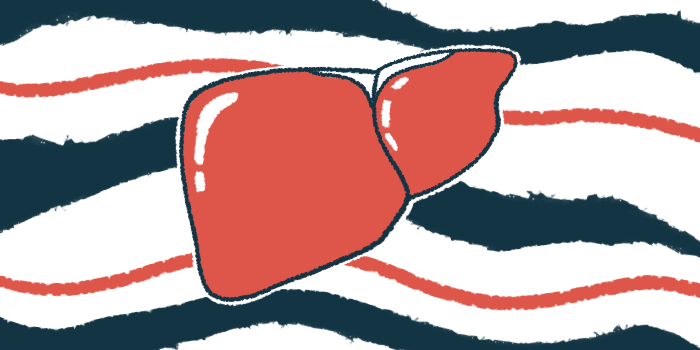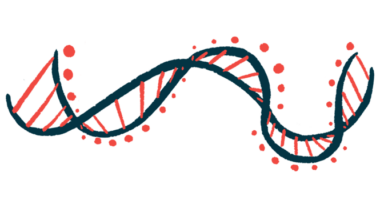Sodium 4-phenylbutyrate delayed transplant need in 2 PFIC2 children
But oral medication fails to ease itching or liver scarring, study finds

Treatment with an oral medication called sodium 4-phenylbutyrate — approved to treat diseases in which the body fails to remove a waste called ammonia — was found to ease some symptoms of progressive familial intrahepatic cholestasis type 2 (PFIC2) in two patients in a small study in Japan.
In fact, sodium 4-phenylbutyrate even delayed the need for a liver transplant in these two children beyond their 5th birthdays, the researchers found. However, its use did not ease itching or liver scarring, two main manifestations of cholestasis.
Overall, in Japanese people with PFIC2, the disease gradually gets worse over time, according to this study, often leading to the need for a liver transplant in infancy. Here, 12 of the 14 patients required a transplant before age 5, at a median age of 9 months.
“The gradual deterioration of laboratory and histological findings up to the time of [living donor liver transplantation] suggests that [the transplant] was inevitable to save each patient’s life,” the researchers wrote.
The study, “Clinical symptoms, biochemistry, and liver histology during the native liver period of progressive familial intrahepatic cholestasis type 2,” was published in the Orphanet Journal of Rare Diseases.
Symptoms of PFIC2 seen to begin at 2.5 months of age
PFIC occurs when fat-digesting bile builds up inside the liver. Its symptoms begin early in infancy and may include itching, known as pruritus, and jaundice, or a yellowing of the skin and the whites of the eyes. Individuals with PFIC often also have an enlarged liver and spleen.
In PFIC2, the condition is caused by mutations in the ABCB11 gene, which provides instructions for making bile salt export pump (BSEP), a protein that transports bile salts out of liver cells. Without BSEP, liver cells become overloaded with bile salts, a component of bile.
In instances where liver disease progresses to become severe, a liver transplant may be recommended as a last-choice treatment for cholestatis. During this surgical procedure, a patient’s diseased liver is replaced with a healthy liver from a donor.
Now, a team of researchers in Japan aimed to understand how PFIC2 progresses until a patient needs a liver transplant. The study included a total of 14 individuals with a diagnosis of PFIC2 from seven centers across the country.
“Based on their year of birth and the number of births in Japan, the incidence [number of new cases] of PFIC2 in Japan was estimated to be 1/500,000 to 1/1,000,000 births,” the team wrote, noting that “this is lower than in other countries,” where the incidence is about 10 times as high.
Among the patients, the disease began to manifest at a median age of 2.5 months, and the median follow-up was 63.2 months, or a little more than five years. The 12 patients who underwent a living donor liver transplant (LDLT) before 60 months of life, or age 5, did so at ages ranging from 4 to 57 months. The median age at the time of LDLT was 9 months.
Patients who underwent a liver transplant grew more slowly than average
The most common symptom seen among the patients was jaundice (100%), followed by an enlarged liver and spleen (85.7%) and pruritus ( 64.3%). Some patients also had diarrhea (21.4%) and rickets (14.3%), a condition in which become too soft and deformed.
The patients who received a liver transplant grew more slowly than average, with a lower weight and height compared with children their age. The differences became greater over time, from the initial visit until their LDLT.
These children also had increasingly higher levels of total bile acids. Cholestasis and other tissue changes, such as scarring, or fibrosis, also got gradually worse over time.
Lab and tissue test results showed worsening disease until the liver transplant, suggesting that LDLT was necessary to survival for these children, according to the researchers.
The team noted that Japanese patients seemed to need a liver transplant earlier than did individuals with PFIC2 elsewhere in the world.
“This may be because of the difference in the rate of patients who underwent biliary diversion,” the researchers wrote. None of the patients in this study underwent this surgical procedure to decrease the size of the bile acid pool in the liver. Meanwhile, nearly one-quarter of patients in a global study did.
Need for transplant delayed in 2 children given sodium 4-phenylbutyrate
The two patients who went more than five years without a liver transplant were given sodium 4-phenylbutyrate, which has been shown to increase the amount of BSEP on the surface of liver cells. Sodium 4-phenylbutyrate also increases how well it pumps bile salts, regardless of whether the protein is mutated.
Those two patients, who started treatment at 14 and 22 months of age — between the ages of 1 and 2 — caught up with growth, and their weight was within the average range at their last follow-up visit.
According to the researchers, sodium 4-phenylbutyrate “improved cholestasis and jaundice in two patients, prolonged their survival time with the native liver, and may avoid [liver transplant].” However, they noted that the therapy “was insufficient to treat pruritus and liver fibrosis.”
[Sodium 4-phenylbutyrate] improved cholestasis and jaundice in two patients, prolonged their survival time with the native liver, and may avoid [liver transplant].
Overall, despite treatment with fat-soluble vitamins and ursodeoxycholic acid, a bile acid commonly used to treat the condition, “Japanese PFIC2 patients had gradually worsening clinical findings since the initial visit, resulting in LDLT during infancy,” the researchers wrote.
While sodium 4-phenylbutyrate delayed the need for a liver transplant, it didn’t address itching and liver fibrosis. That led the team to suggest that it perhaps may be used together with Bylvay (odevixibat), a medication approved to treat PFIC in patients 3 months and older. Bylvay works by blocking the action of the ileal bile acid transporter (IBAT) protein.
Such treatment should be given “early in the course of the disease before liver fibrosis develops,” the team suggested.







